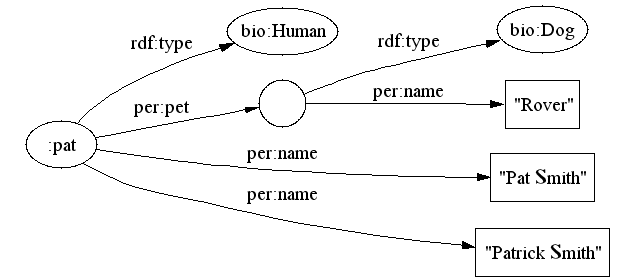The
rdf:ID attribute on a node element (not property
element, that has another meaning) can be used instead of
rdf:about and gives a relative RDF URI reference equivalent to #
concatenated with the rdf:ID attribute value. So for
example if rdf:ID="name", that would be equivalent
to rdf:about="#name". rdf:ID provides an additional
check since the same name can only appear once in the
scope of an xml:base value (or document, if none is given),
so is useful for defining a set of distinct,
related terms relative to the same RDF URI reference.( http://www.w3.org/TR/rdf-syntax-grammar/#section-Syntax-ID-xml-base )
똑같은건데 rdf:ID 는 문서내에서 유일해야 한다는 얘기같군. 그리고,
not property element, that has another meaning <- 이건 Reification 에서 쓰일때 이야기인듯
http://www.w3.org/TR/rdf-syntax-grammar/#section-Syntax-reifying
As for choosing between rdf:ID and rdf:about, you will most likely want to use the former if you are describing a resource that doesn't really have a meaningful location outside the RDF file that describes it. Perhaps it is a local or convenience record, or even a proxy for an abstraction or real-world object (although I recommend you take great care describing such things in RDF as it leads to all sorts of metaphysical confusion; I have a practice of only using RDF to describe records that are meaningful to a computer).rdf:about is usually the way to go when you are referring to a resource with a globally well-known identifier or location.
참고)
Use rdf:about and rdf:ID effectively in RDF/XML
https://mailman.stanford.edu/pipermail/protege-owl/2007-March/001676.html




